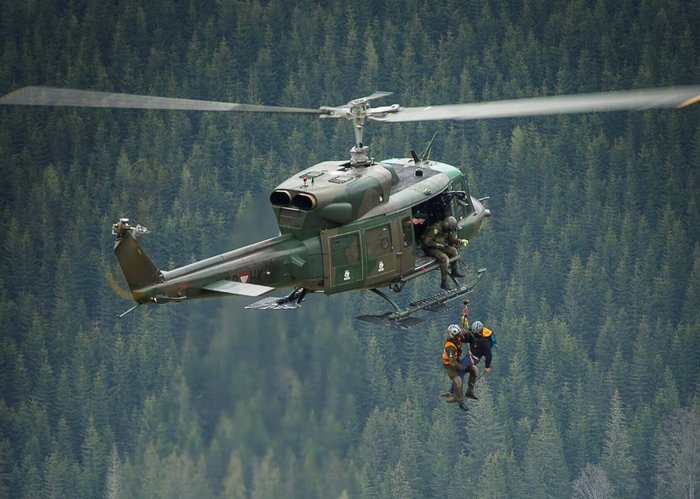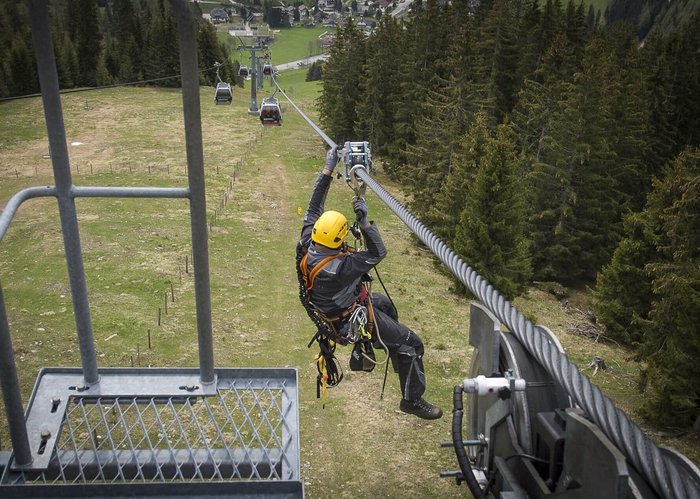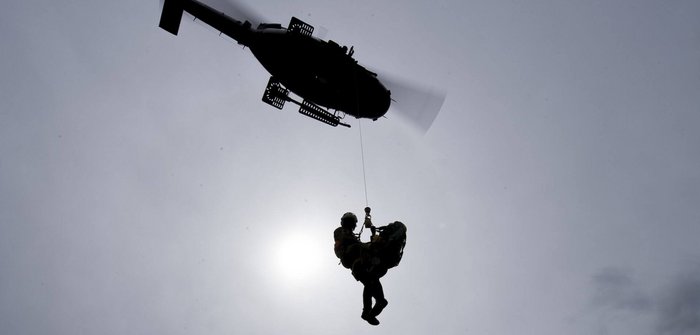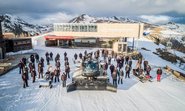There’s no substitute for the real thing!
Fantastic weather, huge grins on our faces and magnificent views over the Nockberge mountains. The sense of anticipation during the typically spectacular ascent towards the ski resort increases exponentially with every second and every metre of altitude. For most of us, from the moment you enter the gondola, it’s hard to think about anything other than stepping out onto the slope. And just when you think you've made it... the cable car suddenly stops; at the highest point of all, of course! Who among us has not wondered at this moment what would happen if the cable car stopped running completely? Would you have to stay overnight?
It should be pointed out, in fact, that this horror scenario is very, very unlikely. Like most cable cars in Austria, the Bad Kleinkirchheimer Bergbahnen are operated with an additional emergency power generator, which in an emergency can continue to run long enough to transport all persons on board to the next station and exit. That being said, however, even if it seems unrealistic, a total technical failure is not impossible either. As a result, once a year cable car employees have to practise “cable car rescue” along with the mountain rescue service. That is the law and it is a good thing. Because if such an exceptional situation were to become reality, there would be no time to pull out the handbook and review the theoretical. After all, in an emergency every step and every move has to be right.
This is also the case with the Biosphärenparkbahn Brunnach in Bad Kleinkirchheim. Nearly 200 volunteers gathered there last May to complete a training exercise. Amongst them were mountain rescue members from the Bad Kleinkirchheim, Klagenfurt, Ferlach, Bad Eisenkappel, Radenthein, Villach and Spittal local groups. Support was also provided by the Austrian Military, from the Jägerbataillon 25, a detachment that is specially trained for air landings. The exercise began with a few greetings followed by a detailed explanation of the task and the purpose. Then things got down to business and it also got very loud! Several helicopters started their propellers and took off, each carrying a task force. With a clear goal in mind, the most difficult manoeuvre began: abseiling from the helicopter onto the roofs of the gondola cabins or the cable car supports. Once in position, the routine part for the mountain rescuers began. A few minutes later, all occupants of the gondola were safely back on the ground after rappelling down. After a mere 160 minutes, all the action was already over - a whopping 50 minutes before the legally prescribed maximum time! Complications? There were none. At most, there were a few challenging winds for the helicopter pilots to contend with.
![[Translate to en:] [Translate to en:]](/fileadmin/_processed_/b/e/csm_STEN_Liftbergeu%CC%88bung_StOswald_FlugrettergruppeSu%CC%88d_210521-0195_8df2c944b8.jpg)








